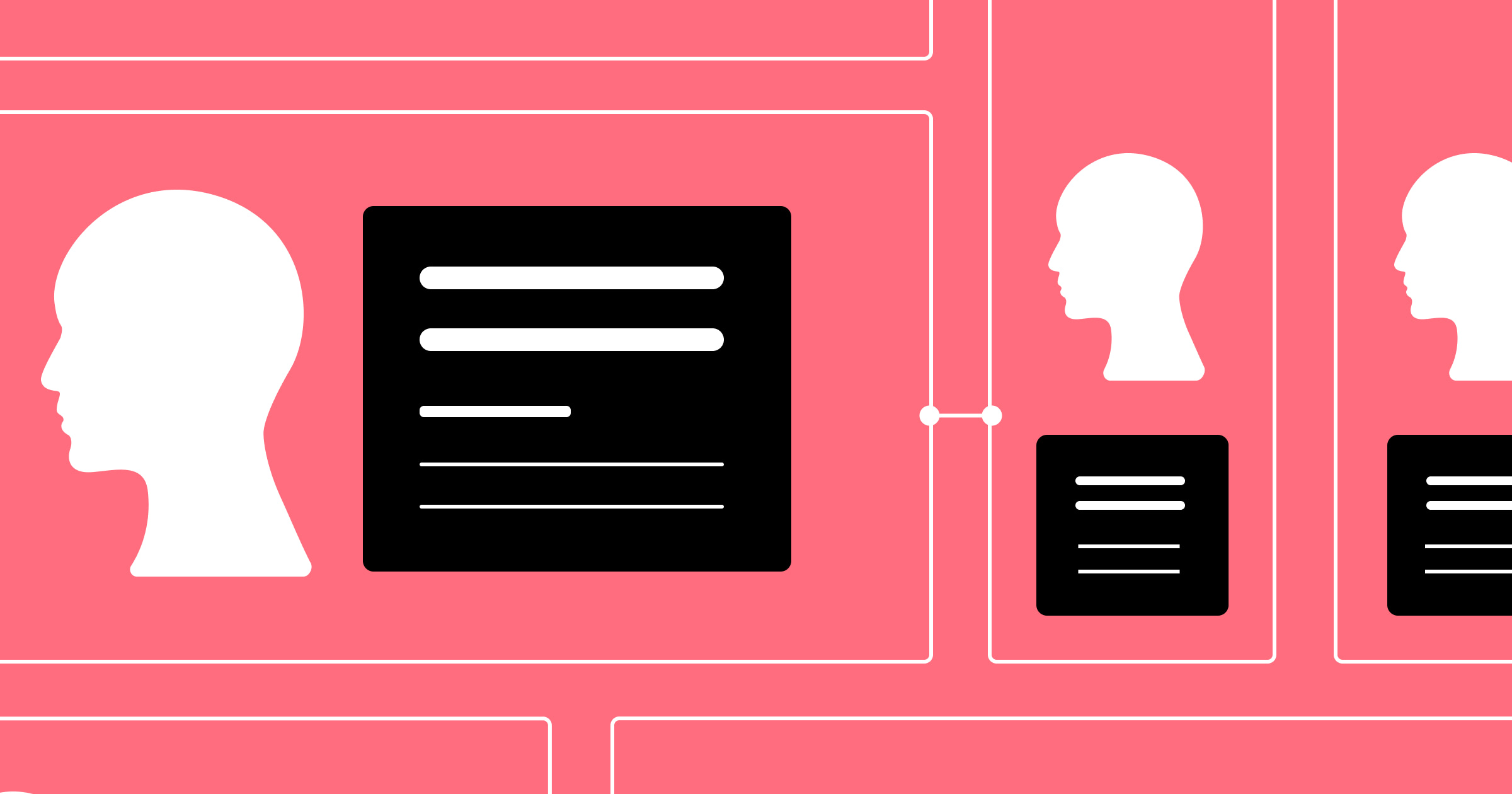Website personalization transforms marketing by delivering tailored experiences that boost engagement, conversions, and customer loyalty through real-time behavior analysis.
While your competitors continue showing the same content to every visitor, you can leverage website personalization to create tailored experiences that speak directly to each user's needs. By implementing personalization technology, your site adapts in real-time based on visitor data, preferences, and behaviors — delivering relevant content that resonates with individuals rather than generic audiences.
This customer-centric approach has been proven to dramatically increase engagement metrics, conversion rates, and ultimately your bottom line. In today's competitive digital landscape, transforming your static website into a dynamic, personalized experience isn't just an option — it's becoming essential for businesses that want to stand out and drive meaningful results.
What is website personalization?
Website personalization is the process of creating customized experiences for visitors to your website based on their unique characteristics, behaviors, and preferences.
Rather than presenting the same static content to everyone, personalization technology analyzes visitor data — such as location, browsing history, referral source, device type, and previous interactions — to dynamically adapt your site's content, offers, layout, and messaging to match each individual's specific needs and interests.
This targeted approach ensures visitors see the most relevant information at the right time, creating a more engaging, valuable experience that increases the likelihood of conversion, builds stronger relationships, and delivers measurable business results.
The importance of website personalization
Most marketers know that website personalization drives higher conversion rates and more revenue. 84% of customers say that being treated like a person — not a number — is very important to winning their business. Companies that don’t personalize the customer experience will fall behind competitors in their respective industries and ultimately lose market share to those who embrace website personalization.
While the importance of website personalization may be perfectly clear, there are misconceptions around how difficult it is to plan and implement a personalization roadmap. In reality, it’s best to keep it simple when starting out.
Considerations for implementing website personalization
Personalized experiences have a time and place on every website. Here are a few things to consider when exploring website personalization as an option for your brand:
- It doesn’t have to take a long time to get started: Look at identifying three elements of a webpage to personalize and testing three different versions of each element at the same time. This allows you to get started quickly and helps you identify which personalized content efforts are having the greatest impact on performance.
- You don’t need first-party data: First-party data can almost always help improve the digital experience, but it’s not required. Contextual data such as geography, time of day, first visit/repeat visit, day of the week, and device type are available on every visit to your site. It’s easy to overlook the value of this contextual data; however, it’s common for these attributes to enable double-digit lift for marketers.
- Website personalization won’t create inconsistent messages: Personalizing your site experience enables you to engage each of your website visitors in ways that are uniquely relevant to them. Each potential customer has different questions and considerations before moving to the next phase of their customer journey. Website personalization enables you to have a consistent message for each visitor, every time.
There are some fundamental differences between traditional personalization, where marketers create segment-specific definitions, and AI-driven personalization, which leverages the power of machine learning to deliver unique experiences. It’s important to understand each method, and teams should keep these considerations in mind when determining the best method for their programs:
- With AI, audience segments don’t have to be predefined: Personalization with machine learning doesn’t require you to predefine segments. Instead, AI-driven personalization automatically discovers segments by observing how messages perform for different audiences.
- Technical and engineering expertise isn’t required to start website personalization: Building your own personalization engine from scratch is resource intensive and requires specialized expertise. Instead, explore partnering with an external solution provider to help you with your personalization initiatives.
Previously, because of the high technical bar in creating AI-driven personalization systems, this approach has only been possible for some of the largest technology companies in the world.
Today, marketers can implement an AI-driven personalization solution by adding just a single line of code to their website. With this approach, getting started with personalization is more accessible for companies of all sizes looking to deliver better user experiences.
With this in mind, let’s get started with website personalization — and that means exploring data.



















The marketer's guide to personalization
Discover how to create personalized website experiences that meet buyers’ expectations in this ebook.
How do marketers use data in personalization?
How do marketers really use data in their personalization efforts? Here are five best practices for using data to build successful website personalization:
- Leverage the data you can see on every impression: It's easiest to start with data that is commonly available on every impression. This includes data such as device type, time of day, day of week, geography, and more. High performing segments are often found via this routinely available data. When you’re considering personalization, make sure the tools you are using can efficiently make use of this data.
- Take advantage of UTM data: Use UTM parameters on links driving traffic to your site to further personalize based on the channel the visitor came from. Creative content, platform, and keywords can be useful in creating a seamless experience across your paid campaigns and your website.
- Use first-party customer data to personalize the customer lifecycle: Your most valuable customers expect to be treated differently than a first-time visitor to your site. Recognizing these customers with tailored offers reinforces the relationship and can increase conversions and loyalty. Conversely, tailored offers for first-time visitors might look like free trial incentives or other messages around trying the product before they purchase.
- Leverage third-party data for better relevancy: Third-party data can be particularly valuable to create relevant experiences for your site visitors. Some of this data can be demographic, such as age and gender, behavioral, such as past purchases and interests, and firmographic, such as reverse IP lookups.
- Lean into AI: Given the rich set of data and number of potential segments available, using an AI based tool is particularly valuable for automating segment discovery and simultaneously learning which variations perform best for each segment.
Website personalization examples
Personalization comes in different forms — from messaging on landing pages to content, offers, and CTAs. Here are a couple examples of website personalization from Webflow customers.
How Code42 reimagined website optimization with Webflow Optimize
Sarah Bartlett, Director of Web Strategy and Marketing Operations, and Sarah Good, Senior Web Program Manager, leveraged Webflow Optimize for its AI technology. The duo wanted to show unique page variations to each website visitor and automatically allocate traffic.
To deliver personalized experiences, Code42 used Webflow’s AI-powered optimization in three categories:
- They experimented with the headlines and subheadlines on their high-traffic pages, creating 76 different variations of their homepage that spoke to a variety of personas. The goal was to learn what high-level messaging was resonating best.
- Code42 integrated Optimize with their 6sense and Marketo instances to leverage intent, company, and person-level data, enabling them to easily create target audiences and provide even more personalized experiences. This also gave them the ability to report on a more granular level to glean deeper insights about their website’s performance among particular audiences.
- By integrating with Marketo, Code42 could also see if a site visitor had already converted on their “contact sales” form. Using this information, they then changed the calls to action across the site to drive those visitors toward starting a free trial rather than contacting sales again.
As a result, Code42 has seen a 15% conversion rate increase on their “contact sales” and “free trial” forms, plus two thousand incremental conversions from other experiences they’ve run. Learn more about Code42’s story.
How Impact Dog Crates scales personalized homepage experiences with Webflow Optimize
McKinley Hancock leads the web development and conversion rate optimization efforts at Impact Dog Crates. After testing hero images with specific dog breads and headlines, McKinley found the best use of Webflow Optimize was being able to create a seamless ad-to-homepage experience, doubling their sales with a 2% conversion rate on the homepage.
AI-driven optimization features have been critical to the brand’s CRO strategy. They allow McKinley to set up experiences that dynamically serve the right variation of the website to the right visitor at the right time. Learn more about Impact Dog Crates’ story.
Frequently asked questions
How does AI-driven website personalization differ from traditional rule-based or segment-based approaches?
AI-driven personalization shifts the focus from static rules to adaptive, behavior-based optimization. Unlike traditional methods that rely on pre-defined audience segments or if-then logic — like showing a certain message to all returning users — AI continuously learns from how different types of visitors interact with your site. It tests variations dynamically and automatically uncovers patterns that humans might overlook, enabling real-time adjustments based on actual behavior rather than assumptions. This makes your personalization strategy not only more accurate but also more scalable, as the system refines itself without requiring constant manual updates.
Do I need first-party customer data to start personalizing my website experience?
You don’t need a full CRM or customer database to begin delivering meaningful personalization. Every visitor provides contextual data the moment they land on your site — including their location, device, time of visit, traffic source, and whether they’ve been there before. This baseline information is powerful enough to tailor messaging and layouts in ways that significantly boost engagement and conversion. While first-party data can deepen personalization by recognizing returning users and past behaviors, starting with contextual cues allows you to act quickly, test what works, and scale based on proven patterns — even before collecting email addresses or purchase history.
What are practical first steps to implement website personalization without overcomplicating the user experience?
The best way to get started with personalization is to keep it simple and focused. Pick one or two high-traffic pages — often your homepage or pricing page — and identify a few key elements like the headline, call-to-action, or hero image. Create two or three variations for each based on basic visitor attributes, such as device type or traffic source. This lets you test meaningful changes without overwhelming your team or your users. As you collect performance data, you'll see what resonates with different audience types, helping you refine and expand your personalization efforts gradually without adding friction or complexity too early.
AI and machine learning for website personalization
Elevating your website personalization strategy with AI technology is the fastest path to meaningful results. With Webflow Optimize, you can seamlessly implement intelligent personalization that adapts in real-time to each visitor's unique preferences and behaviors, driving significant improvements in engagement, conversions, and revenue.
Webflow Optimize's AI capabilities extend your marketing team's impact without expanding their workload. As visitor behaviors evolve, the platform automatically fine-tunes experiences to ensure optimal relevance, creating dynamic connections that turn casual browsers into loyal customers. The platform's intuitive interface makes it easy to launch sophisticated personalization campaigns that previously would have required extensive technical resources.
Ready to transform your static website into a powerful, personalized experience engine? Discover how Webflow Optimize can help you deliver the right content to the right visitor at the right time — every time. Get started today by connecting with our team of personalization experts.

Build with Webflow
Webflow Enterprise gives your teams the power to build, ship, and manage sites collaboratively at scale.































